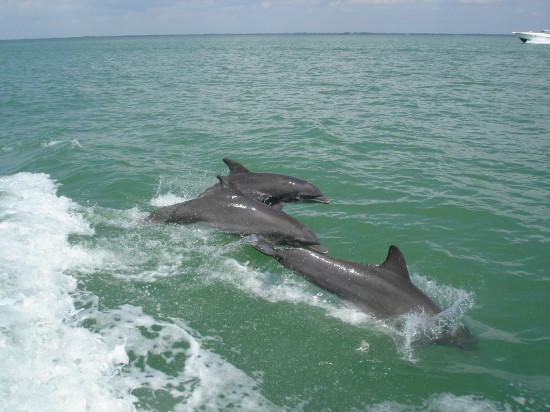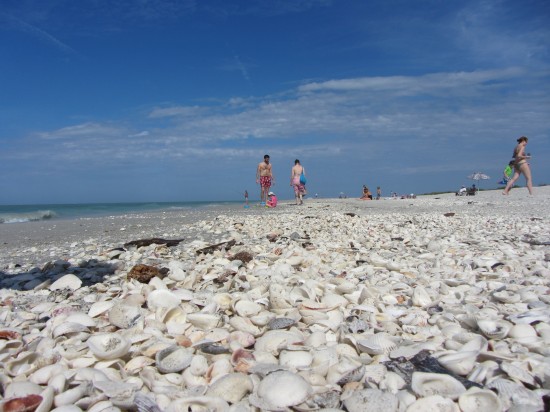The sign says it all. After crossing the five kilometre causeway linking Sanibel Island to the Florida mainland, visitors see the tasteful welcome to “Our Sanctuary Island.” This quiet, friendly community in the Gulf of Mexico must be among the most laid-back places in the United States.
Sanibel and its sister island, Captiva, just west of Fort Myers are in stark contrast to the high-density, over-developed Sunshine State communities that thrive on heavy commercialization and tourism.
The 6,000 local residents of Sanibel aim to keep their sanctuary pristine. No buildings can be higher than the tallest palm tree. Neon signs, chain restaurants, supermarkets and big hotels are discouraged while local, family owned restaurants, grocery stores cottages and resorts thrive. Traffic lights are outlawed. Instead, police officers direct vehicles at the busiest intersections along Periwinkle Way. The main highway bisecting the 16 kilometre long island has a maximum 35 MPH speed limit while 40 kilometres of safe, designated bike paths attract hundreds of cyclists. Bike rental is a thriving business.
Sanibel, with its sub-tropical climate, is part of the largest undeveloped mangrove ecosystem in the United States. Two-thirds of the island is preserved for wildlife with more than 2500 hectares set aside for the J.N. ‘Ding’ Darling National Wildlife Refuge. Named for an American cartoonist and naturalist, it attracts more than 500,000 visitors annually and is covered with mangrove swamps and meandering waterways. It’s common to spot alligators, otters, raccoons and hundreds of species of birds. Access is easy via a circling road and kilometres of boardwalks and nature trails.
The island is also committed to nature with its Clinic for the Rehabilitation of Wildlife (CROW). With a full-time vet, many students and a corps of volunteers, it’s dedicated to finding and healing injured birds and animals from the local counties. The clinic has an owl rehab centre and three fully equipped, modern operating rooms. More than 4,000 ‘patients’ are treated each year before being returned to the wild.
Sanibel and its neighbouring barrier island, Captiva, are perhaps best known for world-class shelling. A unique combination of currents, tides, winds and prime location provide an extraordinary abundance and diversity of shells along their beaches. More than 300 species have been identified and collected at the outstanding Bailey-Matthews Shell Museum on the island. Canadian-born actor Raymond Burr, himself an avid collector, was instrumental in helping to publicize and finance the museum. Every day, but especially on mornings after high winds, hundreds of shell collectors comb the beaches of Sanibel for treasures. The museum director told us that, after storms, he’s witnessed “piles of shells on local beaches that are four feet thick.”
Captiva, the smaller island just to the north of Sanibel, used to be part of its neighbour until a 1926 hurricane carved a narrow channel between them. Joined by a small bridge, it now has the same quiet, unhurried ambience as Sanibel and includes the ultra-posh South Sea Island Resort at its far end. The resort’s marina is where we joined Captiva Cruises and the Lady Chadwick boat for a delightful half-day visiting several other islands in the bay including Cabbage Key. Best known is Useppa Island, a private refuge with lush vegetation, white homes and pink pathways where cars aren’t allowed (only golf carts). The century-old Collier Inn, the former mansion of Florida land magnate Barron Collier who hosted the Vanderbilts, Rockefellers and Rothschilds, provides an excellent lunch for cruise guests. On the way back to Captiva, several playful dolphins decided to put on an acrobatic show alongside the boat. Getting splashed by the mammals was half the fun!
Although most accommodations on Sanibel and Captiva include housekeeping facilities, the array of top quality restaurants is impressive. We particularly enjoyed Traders Café and Doc Ford’s Rum Bar & Grill on Sanibel and the iconic Bubble Room (featuring Bubble Scouts as servers with its walls and tables filled with 30s, 40s and 50s toys, games and artifacts) on Captiva. Traders was a special treat with the best lump crab cakes we’ve ever enjoyed along with amazing fresh fish (macadamia encrusted grouper) and a tender, smoky rib eye steak. Doc Ford’s is wonderful for lunch, especially the grouper sandwich and the buttery, hot Yucatan Shrimp.
We also enjoyed excellent local cuisine at the Old Captiva House (part of the ‘Tween Waters Inn, they have tasty crispy duck at dinner and, in the bar, hilarious crab races several times a week) as well as the Lighthouse restaurant just across the causeway on the mainland (the blackened fish skewers were memorable). Since we were in Florida we just had to find the best Key Lime Pie and gave top marks to Traders (creamy and smooth) and the Sunset Grill (light, fluffy and very limey).
We spoke with several visitors whose chose this part of Florida just for its pristine environment, leisurely lifestyle, excellent shelling and abundant wildlife. Some were new to the area, others were frequent visitors. All of them were delighted. As one told us, “It’s so unlike the rest of Florida. To us, it’s a little piece of heaven.”
Photo Credits
All photos by John and Sandra Nowlan
Isolated Useppa Island – No Cars
Shells by the millions on Sanibel Island
“Ding” Darling National Wildlife refuge.
Dolphins chase Captiva Island tour boat






Please Share Your Thoughts - Leave A Comment!